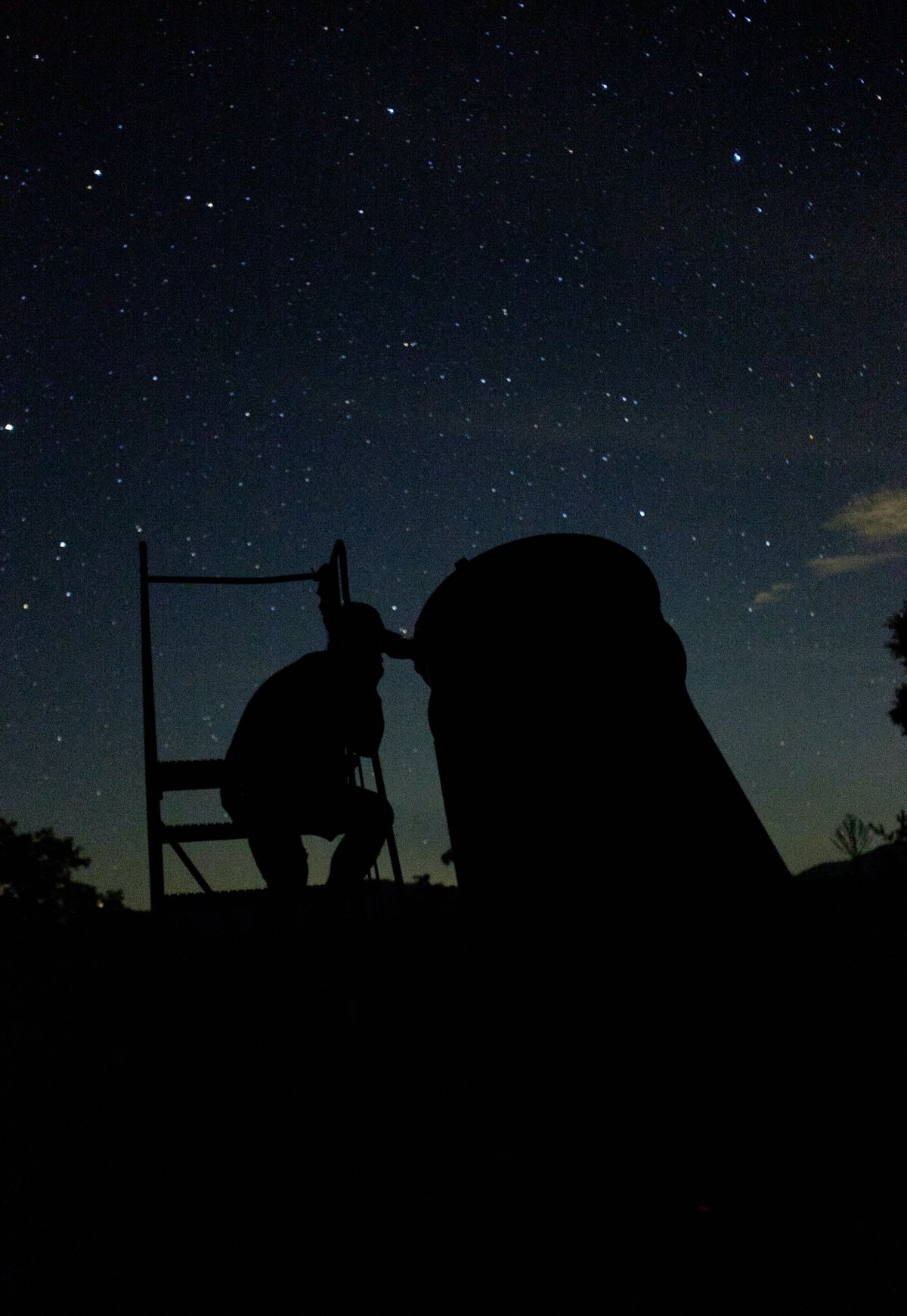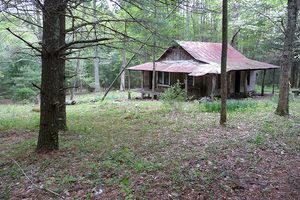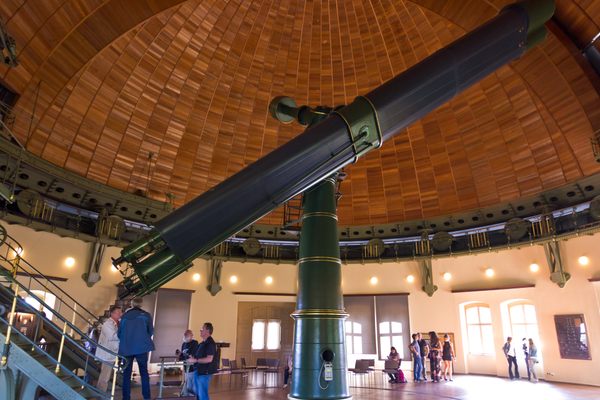About
Since the advent of incandescent light, humans have been casting away darkness with reckless abandon. Global light emissions have risen at an average rate of 2.2 percent annually since 2012, such that 99 percent of today’s North American and European populations now live under light-polluted skies. In an ever-brightening world, the Bare Dark Sky Observatory stands out even more for being so superlatively stygian.
This public observatory crests a 2,700-foot high peak in a particularly undeveloped stretch of the Blue Ridge Mountains outside of Asheville, North Carolina. The facility, managed by Mayland Community College, is named the Earth to Sky Park. Equipped with both a 14-inch Meade planetary telescope and a 34-inch custom-built Newtonian telescope (the largest of its kind in the Southeast U.S. dedicated to public use), faraway features like the eye of Jupiter, Saturn’s rings, and deep space nebulas become easily visible to observatory visitors. In clearer terms, the naked eye can see up to 9,000 stars on its own, but with the help of the observatory’s equipment, that number jumps to 700 million.
This rugged mountaintop was not always the welcoming public facility you see today. Back in the 1800s, it was the site of a highly lucrative mica mining operation (evidenced by both the neighboring town of Micaville and remaining shards still visible around the property in the proper light). When the mica ran dry, the land took a no-less glamorous turn as the county dump. The landfill was capped and abandoned, only to be reoccupied in the 1990s by an art community who successfully converted underground methane deposits from said trash to heating ceramic kilns and powering greenhouses for over a decade. When the methane ran dry in 2003, the county offered Mayland Community College a free lease on the land.
Amateur astronomers from the college began setting up their equipment along the secluded mountain top, favorable for its unobstructed 360-degree views and near-absence of light pollution. In fact, as the park developed into a hot-spot among astronomically inclined locals, Mayland invited the International Dark-Sky Association (IDA)—a multinational advocacy group in the movement against light pollution—to assess the nascent observatory's environs. For the lack of light pollution and its penetrating views of the night sky, the IDA distinguished the observatory as a certified Dark Sky Park, making it one of only 180 worldwide and the first in the southeastern U.S.
While the community college hosts expert-led community events most Friday and Saturday nights (weather and visibility pending), stargazers are welcome to visit the observatory any night they please. Whether you bring your own equipment or not, the sights from this categorically dark viewpoint are sure to be stellar.
Related Tags
Community Contributors
Added By
Published
January 20, 2022





































